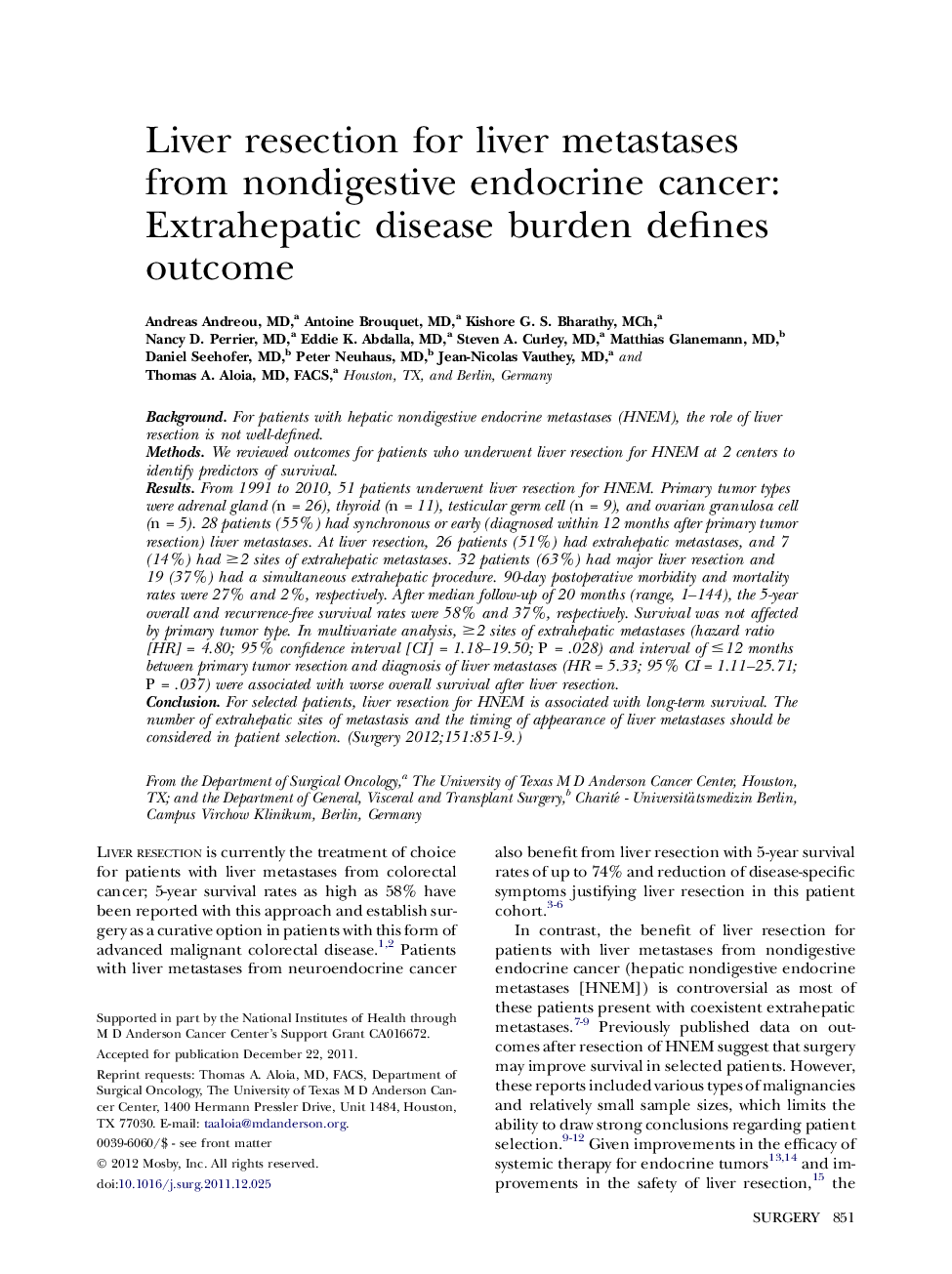| Article ID | Journal | Published Year | Pages | File Type |
|---|---|---|---|---|
| 4307802 | Surgery | 2012 | 9 Pages |
BackgroundFor patients with hepatic nondigestive endocrine metastases (HNEM), the role of liver resection is not well-defined.MethodsWe reviewed outcomes for patients who underwent liver resection for HNEM at 2 centers to identify predictors of survival.ResultsFrom 1991 to 2010, 51 patients underwent liver resection for HNEM. Primary tumor types were adrenal gland (n = 26), thyroid (n = 11), testicular germ cell (n = 9), and ovarian granulosa cell (n = 5). 28 patients (55%) had synchronous or early (diagnosed within 12 months after primary tumor resection) liver metastases. At liver resection, 26 patients (51%) had extrahepatic metastases, and 7 (14%) had ≥2 sites of extrahepatic metastases. 32 patients (63%) had major liver resection and 19 (37%) had a simultaneous extrahepatic procedure. 90-day postoperative morbidity and mortality rates were 27% and 2%, respectively. After median follow-up of 20 months (range, 1–144), the 5-year overall and recurrence-free survival rates were 58% and 37%, respectively. Survival was not affected by primary tumor type. In multivariate analysis, ≥2 sites of extrahepatic metastases (hazard ratio [HR] = 4.80; 95% confidence interval [CI] = 1.18–19.50; P = .028) and interval of ≤12 months between primary tumor resection and diagnosis of liver metastases (HR = 5.33; 95% CI = 1.11–25.71; P = .037) were associated with worse overall survival after liver resection.ConclusionFor selected patients, liver resection for HNEM is associated with long-term survival. The number of extrahepatic sites of metastasis and the timing of appearance of liver metastases should be considered in patient selection.
